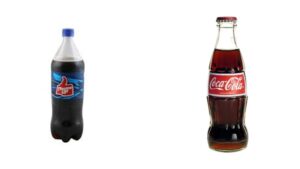Table of Contents
INTRODUCTION
What is it right..? The giant Coca-Cola tried to ‘kill’ Thumsup.
In 1994, lovers of Thums Up, the popular cola brand in India, were in for a rude surprise. Their favorite drink had inconspicuously disappeared from the stores. There were rumors that the drink was being edged out of the market by the very company that owned it.
Thums up and Coca-cola
Thums Up was launched in the Indian market in 1977 under Ramesh Chauhan’s Parle group. In 1993, the brand was acquired by the Coca-Cola Company.
The Chauhan brothers owned part of the Parle Company and already had two other brands of soda, Limca, and Gold Spot, which were popular in India at the time. However, Thums Up quickly became the most popular and had almost a complete monopoly among cola products in India during the 1980s.
Ramesh had developed the formula from scratch, experimenting with ingredients such as cinnamon, cardamom, and nutmeg. The company also wanted the drink to be fizzy, even when it was not ice-cold, so it could be sold by vendors. After much testing and experimentation, the Chauhan brothers and their research team created a cola that was fizzier and spicier than Coca-Cola. They originally planned to name the drink “Thumbs Up,” but removed the “b” to make the name more unique.
Starting in 1990, Pepsi became a big competitor for Thums Up when it joined the market in India. The two competed for several years, and Thums Up created a larger, 300-milliliter bottle size called MahaCola to improve their popularity. In 1993, Coca-Cola joined the market and the three companies competed intensely. Later in the year, Coca-Cola bought the Parle Company for $60 million. When Parle was sold to Coca-Cola, Thums Up had about 85 percent of the market in India.
The Coca-Cola Company had left India in 1977 when the then-Indian government asked it to not just transfer 60 percent of the shares of its Indian firm — according to what was then the Foreign Exchange Regulation Act — but also reveal the formula for its secret recipe to Indian shareholders. The company only returned to India post-liberalization, in 1993.
One of the strongest points of this homegrown drink was also its tagline, ‘Taste the Thunder’, and its appeal of being an Indian cola brand.

“Taste the Thunder is India’s longest-running national campaign even today,”
When Coca-Cola re-entered the Indian market, one of the ways in which it tried to displace Thums Up with Coke was by poaching the franchise bottlers of Parle that owned Thums Up. Parle had been working on an agreement basis with bottle manufacturers across the country.
When Coca-Cola went around buying those units, Parle did not have bottles to actually pack its drink in and sell. Chauhan finally sold off the beverage arm of Parle to Coca-Cola for $40 million.
After Coca-Cola acquired Thums Up, the drink nearly stopped being available in the market. It was also not being advertised or marketed anywhere. But Coca-Cola’s strategy backfired since people started buying Pepsi instead of Coke. The company realized that by ‘killing’ Thums Up, it had served the market share to Pepsi.
Coca-Cola had about 60.5 percent share of the Indian soft-drink market in the 1990s but soon understood that if it removed Thums Up, it would be left with merely 28.7 percent of the market share. Hence Thums Up was re-launched in 1997.
“Initially Coca-Cola’s focus was on their mainstream brands, but soon after a few years, they realized that there was a lot of equity with Thums Up, Limca, and other Indian brands. And they decided to stabilize the production of these, to go after their major competition Pepsi,” Matthias added.
The other Indian beverages acquired by Coca-Cola, however, did not survive the onslaught. Citra and Goldspot were relinquished from the market by the 2000s as they were competing with the likes of Fanta and Sprite, the global brands owned and prioritized by Coca-Cola. However, Limca was retained after Coca-Cola realized that the demand for it was high in the early 2000s. In 2012, Coca-Cola had also brought back Citra for rural areas.
One of the reasons why Thums Up was an instant hit is because it gave more quantity for less price.
Vijay Sharma, director at Employees’ State Insurance Corporation, recalled, “Thums Up was the first drink to launch large-size bottles (300 ml as against 250 ml prevalent at that time) called ‘maha cola’ which added to its appeal as a thirst-quenching summer beverage. I also remember cricketers Sunil Gavaskar and Imran Khan advertising together for Thums Up in sports magazines, two sportsmen of different nations promoting the same product, a rare scene in today’s time.”
Drinking Thums Up was also seen as an assertion of masculinity, strength, and the fact that anyone drinking it was a grown-up and to be taken seriously. Advertisements for Thums Up featured actors like Akshay Kumar, Salman Khan, and Mahesh Babu as its brand ambassadors. They were shown to prefer the beverage over any other for its “new code of masculinity”.
One of the other reasons why Thums Up sustained in the Indian market was also the rise in demand for homegrown products post-liberalization.
MUST READ
HIGHLIGHTS OF UNION BUDGET 2023- 2024
